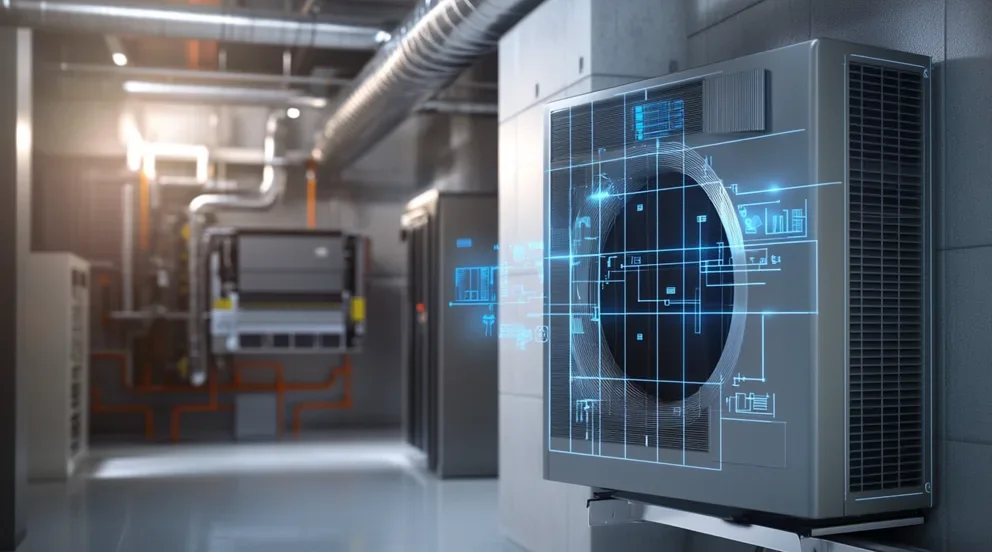KPIs, or key performance indicators, are metrics used to measure the success of service technicians in achieving pre-defined goals. They are used to assess the performance of a technician in providing efficient, timely, and quality service. KPI for service technicians can include the number of service calls completed in a given time period, the number of customer complaints received, the rate of repeat visits, the number of parts replaced per service call, the time taken to complete a service call, and the number of service calls completed on time. The number of customer compliments received is also a good KPI, as it can indicate the level of customer satisfaction with the technician’s work.
KPI for service technicians can also include the number of training hours completed and the number of certifications achieved. The number of training hours helps to measure the technician’s progress in their professional development and the number of certifications indicates their level of expertise in their field. Furthermore, KPIs can also include the technician’s safety record. This includes the number of safety violations committed, the number of accidents avoided, and the number of safety measures successfully implemented. This helps to measure the technician’s commitment to upholding safety regulations and ensuring a safe environment for customers and colleagues.
What are the key features of KPI for Service Technicians?
KPIs for service technicians are metrics used to measure their performance in providing efficient, timely, and quality services. The key features of KPI for service technicians include the number of service calls completed in a given time period, the number of customer complaints received, the rate of repeat visits, the number of parts replaced per service call, the time taken to complete a service call, and the number of service calls completed on time. Other key features include the number of customer compliments received, the number of training hours completed, the number of certifications achieved, and the technician’s safety record.
The number of service calls completed helps to measure the technician’s productivity and efficiency. The number of customer complaints received indicates the level of customer satisfaction with the technician’s work. The rate of repeat visits indicates the quality of the technician’s work. The number of parts replaced per service call helps to measure the technician’s knowledge and skill, while the time taken to complete a service call indicates the technician’s speed and accuracy.
The number of customer compliments received is a good indicator of customer satisfaction, while the number of training hours completed and certifications achieved helps to measure the technician’s progress in their professional development. Finally, the technician’s safety record is a key feature, as it helps to measure their commitment to upholding safety regulations and ensuring a safe environment for customers and colleagues.
What are the benefits of using KPI for Service Technicians?
KPI or Key Performance Indicators are a set of metrics used to measure and assess the performance of service technicians. By using KPIs, service technicians can evaluate their performance and identify areas of improvement. In addition, KPIs help management measure the performance of technicians and make informed decisions about how to improve service delivery.
KPIs are beneficial for service technicians in several ways. First, they provide a measurable and quantifiable metric that can be used to monitor their performance. This allows technicians to track their performance over time and identify areas where they need to improve. Additionally, KPIs can be used to track the performance of technicians relative to one another, allowing management to evaluate who is performing best and make decisions on how to allocate resources.
KPIs also help management measure the efficiency of technicians and identify areas where they can improve. By tracking technician performance and efficiency, management can spot potential inefficiencies and take steps to correct them. This can lead to improved service delivery, reduced costs and increased customer satisfaction. Finally, KPI data can be used to create incentives and bonuses for high-performing technicians. By rewarding high performers, management can encourage technicians to strive for better performance and increase their commitment to the company.
What types of projects can be created with KPI for Service Technicians?
KPI for service technicians can be used to create a variety of projects that help improve the performance and efficiency of technicians. These projects can range from introducing new technologies and techniques to developing training programs and setting up performance incentives. One type of project is to introduce new technologies or techniques that make it easier for technicians to carry out their work. This could include using augmented reality devices or virtual reality simulations to provide an interactive way for technicians to practice their skills. It could also involve introducing software systems that allow technicians to access customer information more quickly or access online resources during a service call.
Another type of project is to develop training programs for technicians so they can stay up-to-date with industry changes and best practices. This could include introducing online training modules, organizing seminars and workshops, or bringing in guest speakers to teach technicians new skills. Finally, KPI data can be used to set up performance incentives for technicians. This could involve providing bonuses for reaching certain performance targets or offering rewards for completing a certain number of service calls within a specified time frame. By setting up such incentives, management can encourage technicians to strive for better results while also rewarding them for their commitment and hard work.
What are some of the challenges associated with KPI for Service Technicians?
KPI for service technicians can be a valuable tool for measuring and assessing performance, however, there are some challenges associated with them. One of the main challenges is that KPIs need to be carefully chosen and implemented in order to ensure they provide meaningful insights. If a KPI does not accurately reflect the technician’s performance then it can lead to incorrect conclusions being made about the individual or team’s performance.
Another challenge is that many KPIs rely on data from other systems such as customer databases or GPS tracking software. This data needs to be accurate and up-to-date in order for the KPIs to provide meaningful insights into technician performance. Furthermore, due to changes in regulations or safety guidelines, KPIs may also need to be updated from time to time, which requires additional resources. Finally, technicians need to be adequately trained in how to interpret and use the KPI data in order to ensure it is used effectively. By taking steps to address these challenges, companies can make sure that their KPIs for service technicians deliver meaningful results and help them improve their performance.
What should organizations consider when implementing KPIs for Service Technicians?
When implementing KPIs for service technicians, organizations should consider several factors. Firstly, the KPIs used need to accurately reflect the performance of individual technicians and teams, which requires a clear understanding of the key objectives and measures that need to be tracked. Secondly, they should ensure that they are using accurate data from other systems such as customer databases or GPS tracking software. Thirdly, they should make sure that their KPIs are regularly updated in line with changes in regulations or safety guidelines. Finally, they should provide adequate training to technicians on how to interpret and use KPI data effectively so it can be used for decision-making. By taking these steps into account when implementing KPIs for service technicians, organizations can ensure it is used effectively across their business.
What are the different types of KPIs for Service Technicians?
There are a variety of KPIs that can be used to measure and assess the performance of service technicians. These include customer satisfaction rating, the average time taken per job, total jobs completed in a month, number of complaints received (or resolved), accuracy and quality of work, repeat visits for the same issue, on-time arrival rate, and total revenue earned from service technician activity. Additionally, organizations may also choose to use KPIs specific to their industry such as safety score for hazardous environment technicians or uptime percentage for IT support staff. By selecting appropriate KPIs for their organization’s needs, companies can ensure they accurately track the performance of their service technicians and use this data towards improving their overall performance.
What are the different licensing options for KPI for Service Technicians?
Organizations have several different licensing options when it comes to KPI for service technicians. These include a one-time license fee, annual subscription or pay-as-you-go option. The one-time license fee is usually the most cost-effective option for businesses that do not require regular updates or access to additional features such as custom reports and analytics. An annual subscription plan is ideal for companies that need frequent updates or access to new features. Finally, the pay-as-you-go option can be beneficial for organizations that only use KPIs on an occasional basis and want to keep their costs low. By carefully considering these factors, organizations can select the right licensing option for their business needs.
Are there any restrictions or compliance requirements when using KPI for Service Technicians?
Yes, when using KPIs for service technicians there are certain compliance requirements that businesses need to be aware of. These include ensuring that the data collected is accurate and up-to-date, as well as adhering to any relevant privacy laws or regulations. Additionally, organizations should also consider their industry standards or specific customer requirements when setting up their KPIs and make sure to comply with those as well. By taking steps to ensure they meet these compliance requirements, businesses can ensure they use KPI for Service Technicians in a safe and secure manner.
Are there any alternatives to KPI for Service Technicians?
Yes, there are several alternatives to KPIs for service technicians that organizations can use to measure performance and track progress. These include customer feedback surveys, time-tracking software, work order management systems and reports created from operational data. All of these tools can be used in combination with each other or as standalone solutions depending on the needs of the organization. Depending on the requirements of their business, companies should assess which alternative will provide them with the best results and then implement it accordingly.
What resources are available to help organizations implement KPIs for Service Technicians?
Organizations can find a variety of resources to help them implement KPIs for service technicians. These include guides, tutorials, webinars and videos from KPI providers that can be used to understand how the technology works and the best practices for setting up KPIs within the organization. Additionally, there are consultants that specialize in KPI implementation who can provide tailored advice on how to utilize these tools most effectively. Finally, online forums and discussion groups offer an opportunity to communicate with other professionals who have experience working with KPIs, thus providing valuable insights into their successful strategies. By taking advantage of these various resources, organizations can ensure they successfully use KPIs for Service Technicians in their business.
What is the future or trends of KPI for Service Technicians?
The future of KPI for service technicians is expected to continue expanding, as the technology continues to evolve and improve. One trend that is becoming more common is using AI-powered analytics to automate data collection and analysis. This allows organizations to easily assess performance levels and quickly identify areas requiring improvement. Additionally, more businesses are also deploying predictive analytics, which can help them anticipate customer needs before they arise. Finally, cloud-based technologies are becoming increasingly popular due to their flexibility, scalability and ease of use. All of these trends demonstrate the potential of KPIs for Service Technicians in improving operational efficiency and driving customer satisfaction across a range of industries.
What are people saying about KPI for Service Technicians?
People have generally had positive experiences when using KPIs for Service Technicians to measure performance and track progress. Many professionals have found that the insights gained from these tools can be used to identify areas of improvement, streamline operations and optimize customer service. Additionally, many organizations have noted the cost savings achieved by leveraging KPIs, as they are often more economical than other alternatives. Overall, feedback about KPI for Service Technicians has been mostly positive, with users praising its accuracy, user-friendly interface and affordability.



